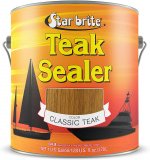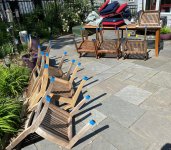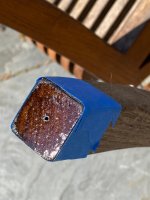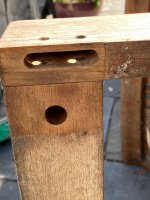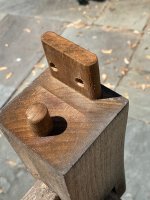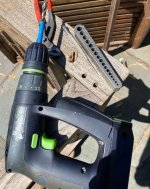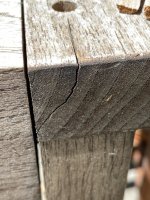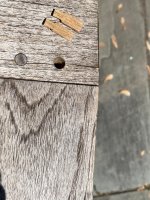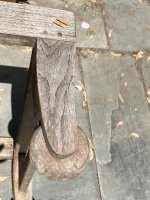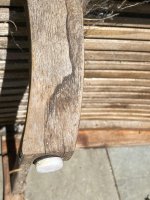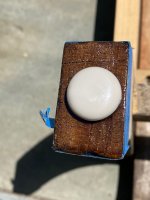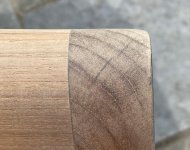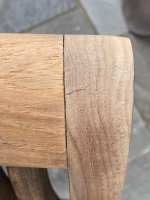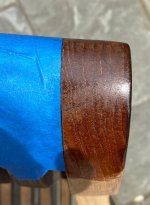So, after the first look-see of the teak furniture, I detected many areas that needed attention. The question then became where do you start and what is the largest potential for failure if something is not done.
I decided that the end grain of the table legs & chair legs presented the largest liability. Once those things go soft, the only solution is to start cutting them back to good wood.
Also, knowing that it takes days to dry out the end grain, that also prompted me to attack those areas first as we'd had a week of very hot & dry weather. So, first thing is to mask the legs and sand them with 80 grit to prepare them for the epoxy.
Here's a shot of 32 of the legs masked and pointed to the heavens for drying.
[attachimg=1]
The issue is that despite the fact that I installed 1/4" thick glides on every leg, the bounce-back of the rain from the patio still got sucked up into the legs and most of them started to split. Here's a shot of the leg from the chaise lounge with the glide still installed, notice the 2 cracks.
[attachimg=2]
The epoxy I decided to use is Smith's Clear Penetrating Epoxy Sealer™, there has been some testing done and it will wick into the endgrain of wood up to 12". The drill I followed, was to use a foam brush and dab a large dose of the EPES on every leg and then minutes later apply another dose. Continue to do this until the leg surface begins to gloss over. I think I averaged 7-8 coatings before the legs refused to absorb more CPES. This stuff is quite popular in the wooden boat market.
http://www.smithandcompany.org/CPES/
Here's a shot of the bottom of a leg after 7-8 coats of CPES. Note the original nail hole for the glide that I attached years ago.
[attachimg=3]

